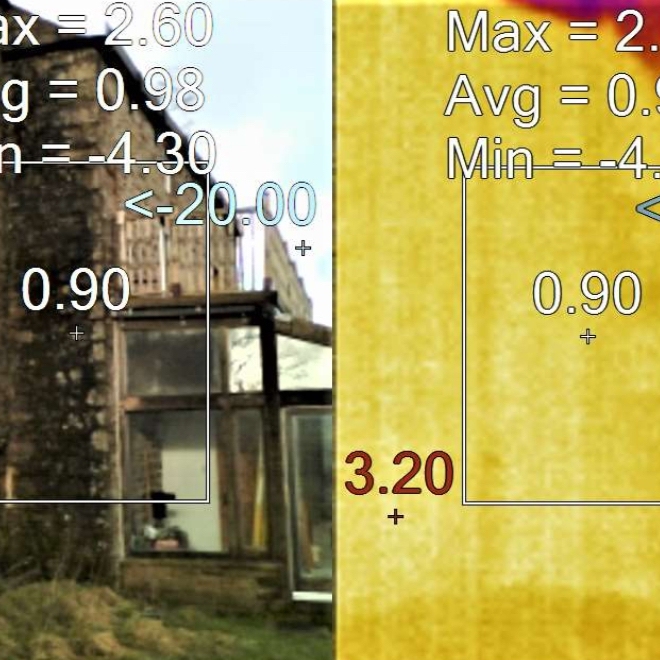As part of the Alston Moor contribution to the current emergency climate actions, it is planned that this camera will be loaned to the local residents of Alston Moor enabling them to review the insulation and draught proofing standards of their properties, and to recognise any significant shortfalls that might require some professional intervention.
It is generally recognised that a significant amount of energy is wasted from the older residential properties in particular, causing unnecessary expense in wasted fuel for the owner and excessive CO2 emissions for the planet, and here on the Moor we have a very large percentage of 19th Century and earlier houses of stone construction, often with very little in the way of insulation fitted and frequently suffering from various problems caused by unsympathetic repairs over the last one hundred years or more, and in urgent need of being generally upgraded to a higher standard of energy efficiency.
Clearly the age, fuel type and efficiency of the central heating boiler plays a large part of the potential wastage of energy, but with a large percentage of the homes reliant on LPG or oil for fuel, providing that the boilers are maintained and serviced regularly there’s very little that can be added without professional intervention and significant financial outlay.
However, quick wins and significant savings, both of money and emissions can often be made by the fitting or improving of insulation to a property, but identifying and prioritising the areas where these improvements can be made can be very difficult to identify with the unskilled naked eye.
A Thermal Imaging camera ‘sees’ in infra-red and displays a multi-coloured image that shows differences in the temperature of an object, with a resolution of as little as 1/10th of a degree C, enabling a cold spot on an interior wall or a ceiling for instance what would show as a dark patch on the camera to be identified, and the reason for the lower temperature investigated. It might be caused by a lack of insulation at this point, a draught of cold air, or possibly be the result of damp from a blocked gutter or leaky roof, and so often gives the first set of clues about the overall condition of a building and it’s thermal efficiency.
There are a number of schemes available to assist homeowners and especially those on low income to improve the energy efficiency of their homes thereby improving the levels of comfort and energy usage, and several organisations set up specifically to carry out the work required and in some cases to fund, partially or in full, the costs of materials and labour once the requirement has been identified.
The usage of this camera should be seen as the first of a number of steps that residents of the Moor can take to identify if their property is unnecessarily wasting energy, and having recognised that there may indeed be an issue, to contact a professional for further advice.
The first camera that has been chosen for this scheme is a Fluke PTi120, which is a small ruggedized hand held device around the size of a large mobile phone which shows the thermal image as a picture on a display screen on the back, and also allows a number of thermal images and a regular photographs to be captured simultaneously, saved and then downloaded on to a computer for further analysis with the free Fluke Connect software.
The results of the first trial usage of this equipment is shown in the attached PDF
Thermal Image Camera Blog from AMP - Feb '20 with intro.pdf
Site TitleSite Slogan
Thermal Imaging Camera - Report
by | Gordon Monk
At the end of 2019, the Lottery funded Town Heritage Scheme generously awarded a sum of money for the purchase of a Thermal Image Camera to be used for the benefit of the Alston Moor Community under the guidance of the Alston Moor Partnership (AMP).
Tags:
Categories: GeneralTownscape Heritage


Site TitleSite Slogan
ALSTONMOORPARTNERSHIP
- living and working together in the highest community in England
Founded by Tom Bell and others in 2004, Alston Moor Partnership is a company limited by guarantee. AMP as it is known has engaged in several projects over the years all for the development of the area known as Alston Moor.
Site TitleSite Slogan
About
Site TitleSite Slogan
Projects
Site TitleSite Slogan
More….

Website built by Alston Web Weavers
Site TitleSite Slogan
© 2004—2025 Alston Moor Partnership Ltd. All Rights Reserved.
Alston Moor Partnership - Latest Article


